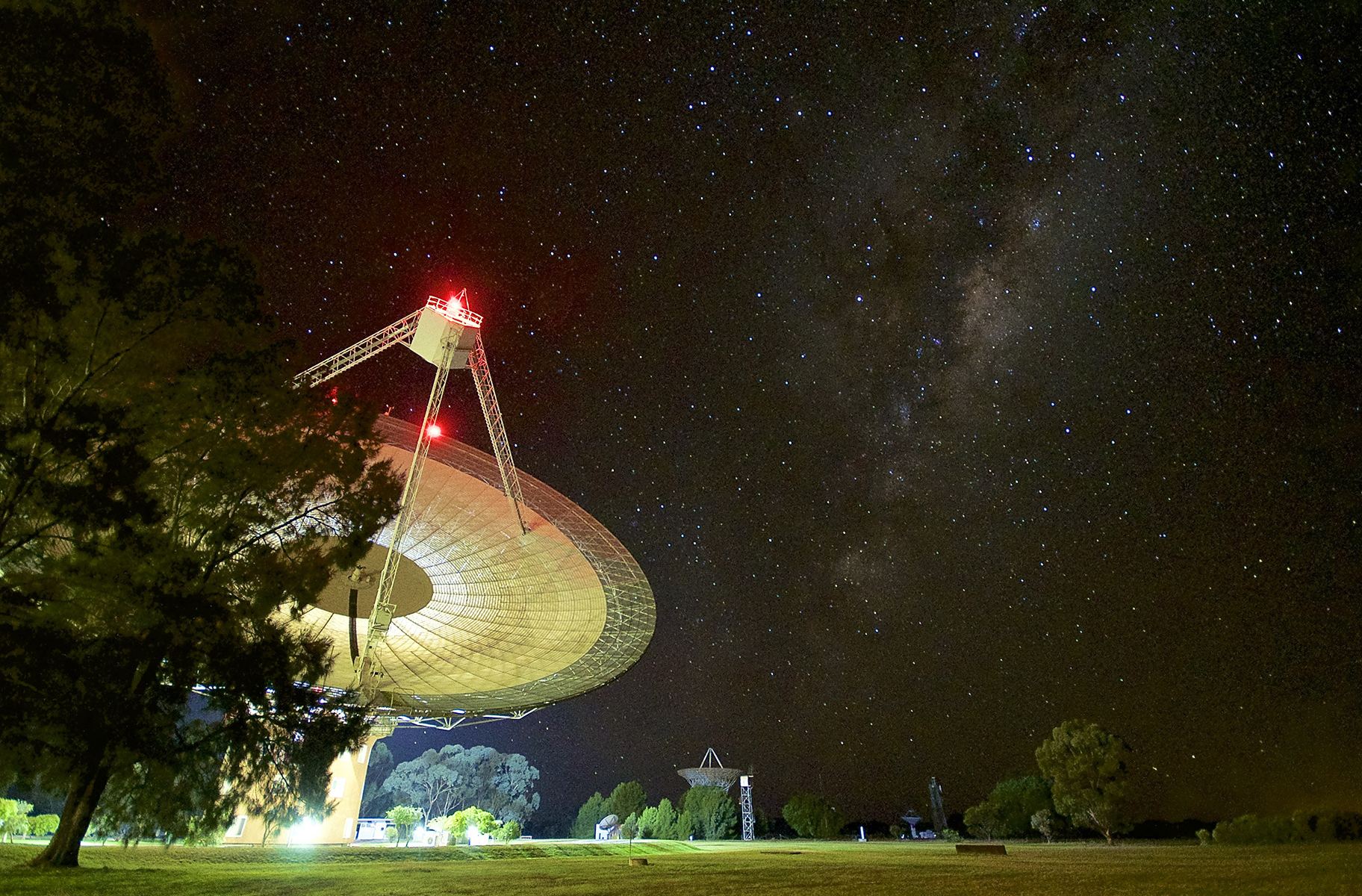There’s a powerful scene in the movie “Contact” (one of my favs) where lead character Ellie Arroway is sitting among an array of telescopes and hears the first alien signal – an ominous pulse – received by humanity. She races back to the control center where the array is pointed off target and then back to verify the signal. Contact is made. Shortly after, a message is found in the signal and we’ve confirmed the existence of alien life!
Ellie Arroway was inspired by a real-life pillar of the SETI community, Dr. Jill Tarter. I had the privilege of interviewing Jill Tarter last year and asked about that scene. She laughed saying “There’s not a lot of sitting around with headphones on. It’s not really that simple.” When it comes to analyzing signals from the stars for alien life, distinguishing a potential alien message from the noise of our own planet is quite complicated.
Excitingly, we’re watching that analysis play out right now as a signal which appears to originate from our closest neighbour star, Proxima Centauri, was recently detected by the Breakthrough Listen Project
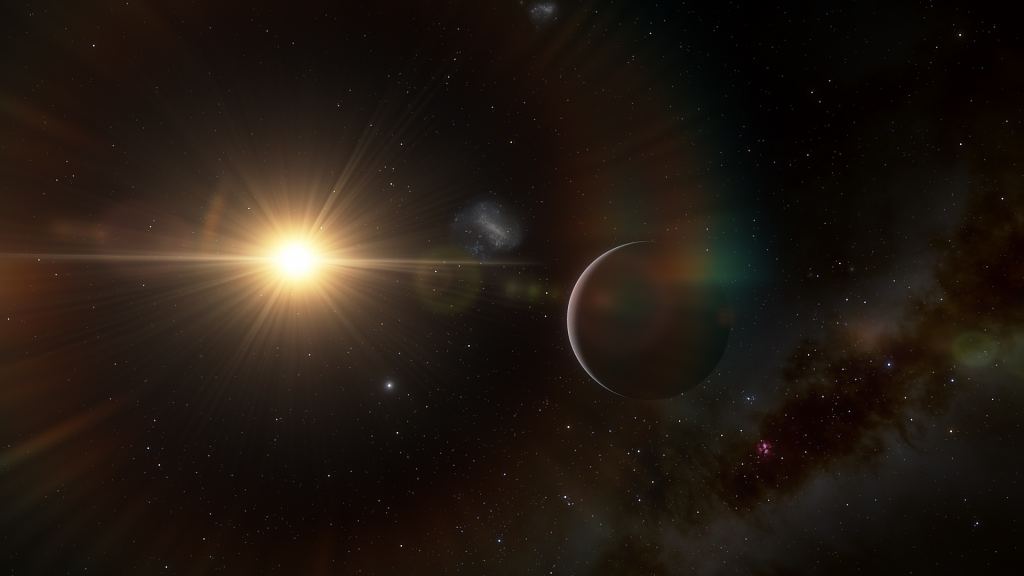
A Proximal Candidate
Founded in 2015, Breakthrough Listen is new to the SETI (Search for Extraterrestrial Intelligence) community. SETI itself isn’t just one initiative but rather a field of research made up of different projects, institutions, methods, technologies, and funding sources in the search for alien life. Breakthrough Listen’s specific mission is to observe one million of the closest stars and the 100 closest galaxies to Earth for “technosignatures” – signs of alien technology like radio signals. The program uses the Parkes Observatory in Australia 380km outside of Sydney, and the Green Bank Observatory in West Virginia, United States – both North and South Hemispheres to observe the whole sky.
Until now, all detections by Breakthrough can be attributed to cosmic phenomenon or detections of our own technology like signals bouncing off satellites. But one signal seems beyond terrestrial or natural explanation (for now) and is considered a potential contact candidate named “Breakthrough Listen -1” or “BLC-1”.
The signal was originally recorded between April – May of 2019 by the Parkes Observatory. (Coincidentally, in the fictional Star Trek Universe, first contact with aliens happens April 5th). The data was more recently revisited by undergraduate student Shane Smith who discovered a distinct narrow frequency of 982.002Mhz coming from Proxima Centauri, our closest neighbouring star system, at 4.2 light-years. The data also showed that just as Ellie Arroway experiences in Contact, when the observatory was “nodded” – moved off target and then back – the signal returned. Is the signal from aliens?
I reached out to Jason Wright, Professor of Astronomy and Astrophysics at Penn State University to comment on the story. Jason is also director of the Penn State Extraterrestrial Intelligence Center,
“This is not a natural phenomenon—I haven’t seen the data, but if it passed BL’s tests then it’s too narrowband to be natural. It’s definitely caused by technology.” Jason added, however: “But it’s almost certainly ours!” (emphasis added)
So most likely not aliens.
Even Pete Worden, an executive director at Breakthrough Initiatives reiterated the signal will most likely fail to yield a positive result under further scrutiny. But the possibility hasn’t yet been ruled out. Under the direction of Penn State University Grad Student Sofia Sheikh, the research on BLC-1 is still ongoing in partnership with UC Berkeley‘s SETI program. The reason the public knows about the story before the published scientific results are because the story was leaked to the Guardian by an anonymous source which has caused a stir in the community.
I also reconnected with Dr. Jill Tarter, currently Chair Emeritus for SETI Research at the SETI Research Institute, about this story. She explained “The BL team wasn’t finished with the analysis they wanted to do once they discovered this candidate, they certainly were not ready to have the information publicized. So this crying wolf does hurt SETI’s scientific credibility.”
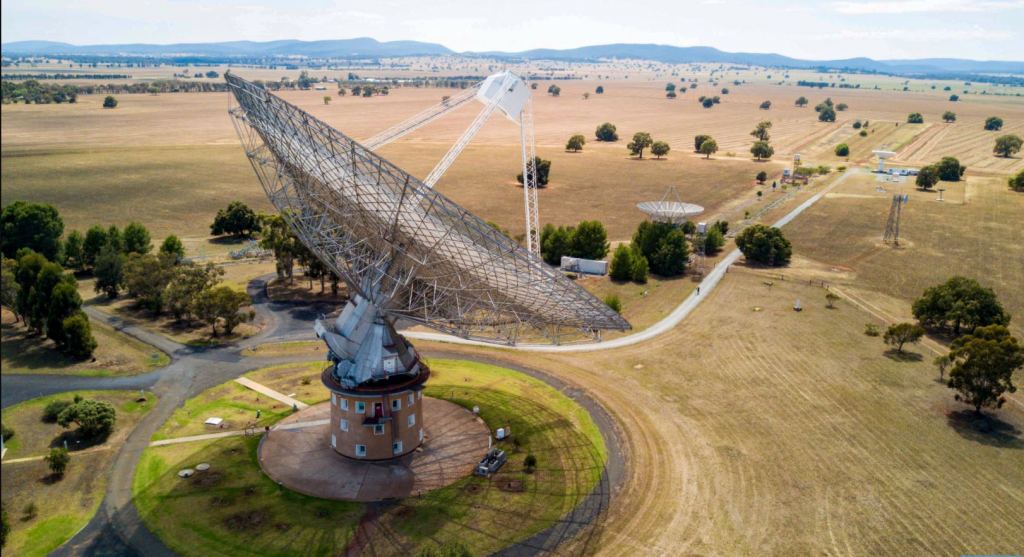
A Case for Contact
While probably not aliens, the signal is still piquing scientific curiosity. The signal’s apparent origin, star system Proxima Centauri, has two exoplanets: Proxima b discovered in 2016 by Guillem Anglada-Escudé and their research team, and Proxima c a planetary candidate discovered in 2019. Proxima b is a rocky world that orbits in the habitable zone of its star allowing for the possibility of liquid water. It’s conceivable the planet could support life but we don’t actually know if the signal from Proxima Centauri originates from one of the system’s two planets.
The signal is shifted in frequency to suggest that it’s moving relative to Earth – it’s not physically ON the Earth – but could still be a satellite in orbit. Though the frequency of the signal, 982.002MHz, is uncommon for our radio-emitting technologies, and the region of the sky where Proxima is located is not known to host a great deal of satellite traffic. Lastly, the signal was very narrow in frequency, a distinct spike at 982.002MHz which, as Jason Wright pointed out, is likely technological in origin.
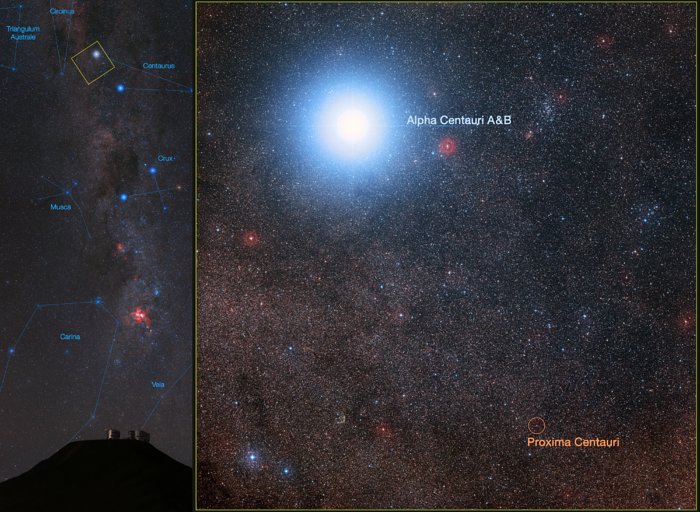
Dismissing Little Green Men
What about the case against alien origin? While Proxima b resides in the habitable zone of its star, Proxima Centauri is a red dwarf “flare star.” Red dwarfs are prone to massive outbursts of plasma and radiation. Being a cooler star, the habitable zone is quite close to the star itself. Proxima b’s year is only 11 Earth-days long. The planet is then likely subjected to flares that could sterilize life, prevent life from forming at all, or even strip away the planet’s atmosphere. In fact, the Parkes Observatory wasn’t even looking for technosignatures when BLC-1 was detected. The Observatory was studying Proxima’s flare activity.
While the signal is frequency shifted indicating it’s moving relative to Earth, the shift is in the wrong direction. Like the sound of an approaching car, the pitch is increasing rather than decreasing which we’d expect from Proxima. It’s also possible the signal is Earth-based and just changing in frequency which would make it appear like a moving source even though it’s fixed to the planet’s surface.
And while the signal is at a very narrow part of the spectrum, there might be a possibility (though unlikely) that it’s somehow created by natural phenomena we just don’t know about yet. Before we knew what pulsars were – the spinning cores of dead stars – we labeled one of their first discovered pulsating radio emissions as LGM1 or “Little Green Men 1” The name was facetious even at the time.
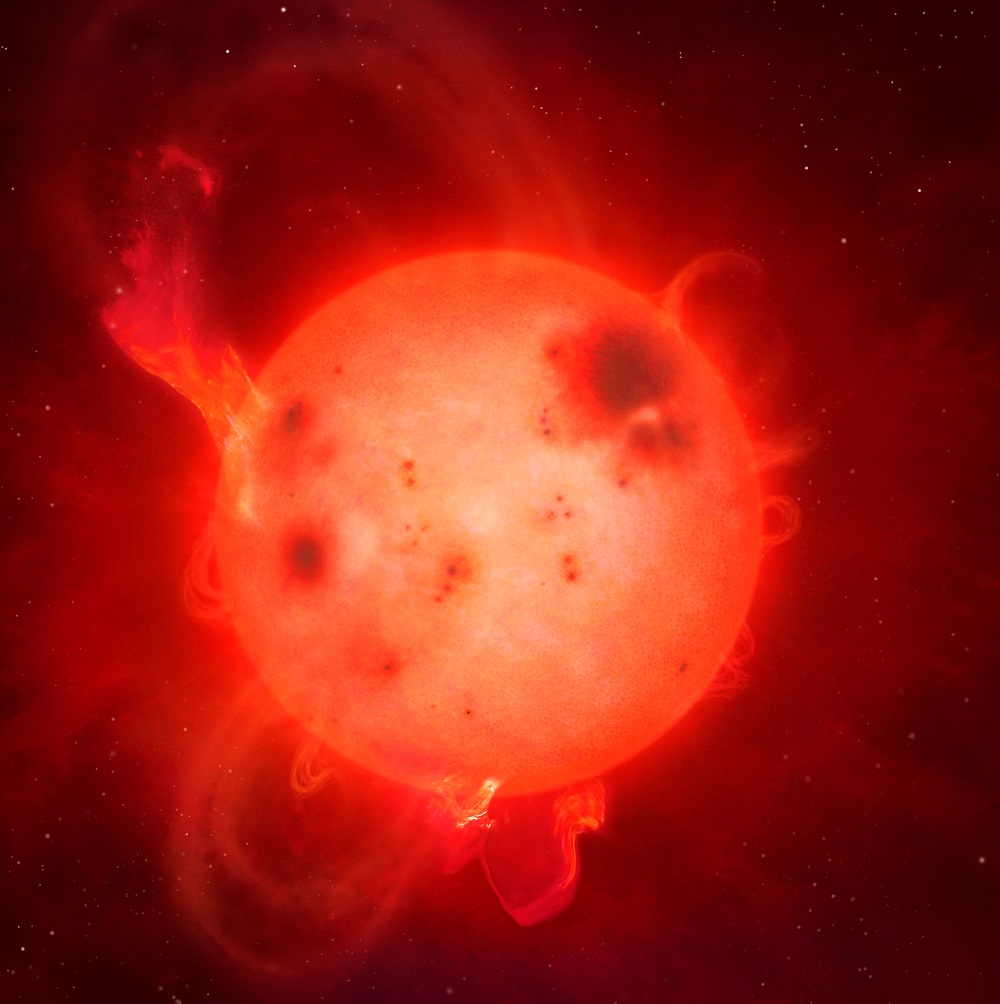
BLC-1 doesn’t carry data or a message. It’s not a modulated radio signal with voice or information. In Contact, the movie, a signal from aliens contained engineering specifications on how to build a spaceship. This signal doesn’t even say “Hi.” Maybe the signal itself is the message? But then we start treading into the territory of psychology – trying to anticipate what kind of message aliens would send.
As Jason Wright says “I can’t even tell you why humans would make this sort of signal with no modulation. But yes, there are lots of ideas about why we might get a signal like this. Choosing among them before we’ve seen a signal is definitely an exercise in speculative xenopsychology.”
Jill Tarter explains that there’s difficulty ruling out false positives when only a single telescope is observing the signal source. Tarter’s Project Phoenix SETI initiative, which utilized several observatories including Parkes, always used two widely-spaced telescopes pointed simultaneously at a target star system of interest. A true detection will show in both scopes whereas interference and self-detections will be unique to one or the other – a stronger technique for ruling out false positives than simply “nodding” the single primary scope on and off source.
Tarter adds “This is undoubtedly an artificial signal – the question is who generated it, us or them? This sort of transient signal is difficult to verify – that’s why you want simultaneous observation with multiple telescopes.” In the case of BLC-1, only a single scope was observing Proxima Centauri.
Lastly, the odds are simply against a positive result. Our galaxy is enormous. Like really, really big. The Milky Way is about 200,000 light-years across and filled with at least 100 billion stars. The odds that the CLOSEST of all those stars to ours also hosts a living technological civilization are just…well…astronomical.
Connection
The research on the signal continues. Jason Wright says that the next steps will include “seeing (if) the signal repeats. Then the team can then apply other techniques, such as using multiple dishes or receivers simultaneously, to rule out (Radio Frequency Interference).” just as Jill Tarter emphasized. He adds that “This is one reason some astronomers are so excited at the possibility of putting a telescope on the far side of the Moon, where there is almost zero radio frequency interference.” – a step toward future SETI. One of the other Breakthrough initiatives, Starshot, endeavors to actually send a probe to Proxima Centauri itself.
In the meantime, we’re not likely on the verge of making contact. In either case, the whole story is a fascinating study of how and why science works. The answer to the question of whether we’re alone in the Universe is like “THE” great answer – one which holds deep meaning for individuals and for our civilization. We all seek connection, belonging. We want to connect with the community, society, the Universe around us. As individuals, we want to ask whether we’re alone. Scale that question from individuals to the size of a civilization, you get SETI. Here is where the dispassion of the scientific method is so important. Our desire for an answer, especially with something so fundamentally human as belonging, must be tempered by the process needed to have an accurate result. That’s why the scientific community is trying to get ahead of the leaked story until the hard data and analysis is published.
When I asked Dr. Jill Tarter during our interview last year why she does this work, she said “We’d learn it’s possible to have a long future.” For her, the answer was one of hope in the possibility of our own survival. If two technological civilizations co-exist in time and space, that means the odds of making it out of our own technological infancy are pretty good – A neighbour saying “Hey. Earth. You’ve got this. We did it. You can too.” For Jason Wright, it’s the thrill of discovery. “People want to know what’s out there! Knowing our place in the universe is important to a lot of people, and it’s something they expect astronomers to be working on. I agree with them!”
As for me, I eagerly await the published results. Even without a definitive answer, I think we can all still look up at night and know we’re a part of a larger Universe. Though I’ll let Dr. Jill Tarter better articulate that sentiment below:
Lead image: The Parkes radio telescope at Parkes Observatory in New South Wales, Australia. The telescope appears to have picked up a technological signal from our neighboring star system, Proxima Centauri in April and May 2019. But this discovery is yet to be verified. Image via Daniel John Reardon/ Wikimedia Commons.
Edit: Additional source quotes added to the piece not available at original time of publication
Correction: The article originally listed Sofia Sheikh as a student from UC Berkeley – she is a graduate student from Penn State University
Follow Matthew on Twitter @BeWonder_Full
More to Explore:
Scientists looking for aliens investigate radio beam ‘from nearby star’ | Space | The Guardian
Alien hunters detect mysterious radio signal from Proxima Centauri (nationalgeographic.com)
Alien Hunters Discover Mysterious Signal from Proxima Centauri – Scientific American
Did Proxima Centauri Just Call to Say Hello? Not Really! | SETI Institute

